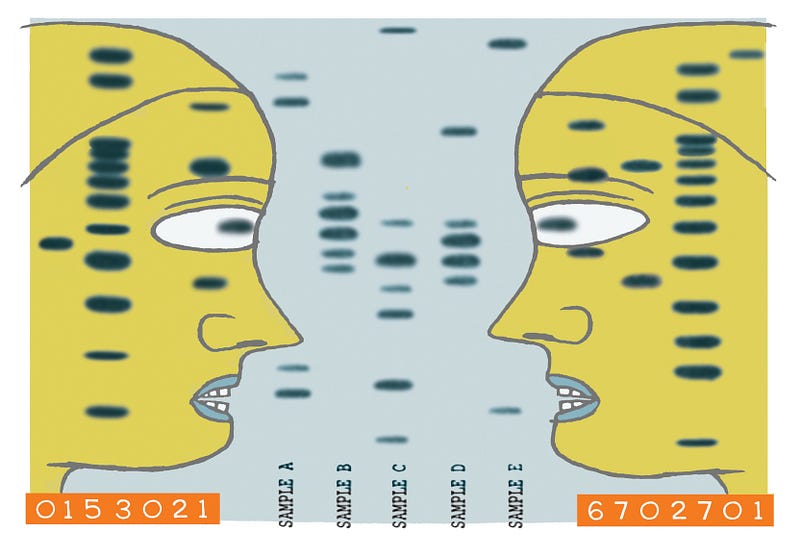Identical Twins and DNA Testing: Unraveling the Criminal Enigma
Written on
Chapter 1: The Challenge of Identifying Criminals Among Twins
One puzzling question in forensic science has been identifying the perpetrator when the suspects are identical twins. Traditional DNA tests have often fallen short in these cases. However, recent scientific advancements may change that.

In November 1999, a woman was assaulted in a parking lot in Grand Rapids, Michigan. DNA evidence collected from the crime scene did not match any known individuals, and with no fingerprints or witnesses, the investigation stalled.
Five years later, a man serving time for a different crime provided a DNA sample for his parole application that matched the evidence from the rape. However, the twist was that he had an identical twin, complicating matters since standard DNA tests cannot differentiate between them. Thus, the case remained unresolved for nearly two decades.
Advancements in genetic science have begun to shed light on how identical twins develop unique genetic markers. Recent studies indicate that as embryos, identical twins can develop distinct mutations, which could be leveraged to distinguish between them in a forensic context.
Section 1.1: The Importance of STRs in DNA Testing
Forensic DNA testing gained traction in the 1990s, and while it has proven invaluable in identifying individuals, it struggles with identical twins due to their nearly identical DNA profiles. The technology primarily focuses on short tandem repeats (STRs), which are segments of DNA that vary significantly among individuals.
However, these STRs can yield inconclusive results in cases involving twins. For instance, in a Missouri paternity case, both twins matched the DNA test, leaving the court to rely on circumstantial evidence to determine paternity.
Subsection 1.1.1: Exploring New Genetic Horizons
Scientists have not given up on developing methods to differentiate between twins. They realized that during the early stages of embryo development, small mutations can occur, leading to unique genetic profiles for each twin.
Initial attempts to create tests based on these principles faced challenges. Researchers at the University of Hanover explored whether new STRs could arise uniquely in one twin. Unfortunately, their efforts did not yield the desired results.
Section 1.2: A Breakthrough in Forensic Genetics
In 2012, further discussions among geneticists led to the idea that sequencing entire genomes might provide the answers needed to identify which twin was responsible for a crime. By looking for specific mutations shared only between a child and one twin, a definitive identification could be made.
In 2014, Eurofins Scientific successfully demonstrated this concept, differentiating between the DNA of twin brothers using whole genome sequencing. This proof of concept sparked renewed hope in solving complex cases involving identical twins.
Chapter 2: The McNair Case and Legal Hurdles
The case of Dwayne McNair serves as an example of the challenges faced in the legal system when dealing with identical twins. After matching DNA from a cigarette found at a crime scene to McNair, it was later discovered that he had a twin brother, Dwight. This led to an impasse in the investigation.
Detectives eventually identified another suspect, Anwar Thomas, who implicated Dwayne McNair as a co-conspirator. However, without definitive evidence distinguishing the twins, the case remained complicated.
Eventually, Dwayne's case was revisited when the new DNA testing method developed by Eurofins was considered. Although it came with a high price tag, the potential to solve the case was deemed worth it.
In 2014, after the new test confirmed that the DNA from the rape scenes matched Dwayne and not Dwight, the legal proceedings intensified. The statistical likelihood of guilt was presented to the court, but initial resistance from the defense regarding the test's reliability posed significant challenges.
Ultimately, Dwayne McNair was found guilty and sentenced, but the case highlighted the potential for future advancements in DNA technology to resolve long-standing legal dilemmas involving identical twins.
As forensic science continues to evolve, it is anticipated that more cases involving identical twins may be resolved, breathing new life into cold cases that have long remained open.
For more great stories, subscribe to The New York Times.
© 2019 New York Times News Service